
News
Behind the Headlines
Two-Cents Worth
Video of the Week
News Blurbs
Articles
Testimony
Bible Questions
Internet Articles (2015)
Internet Articles (2014)
Internet
Articles (2013)
Internet Articles (2012)
Internet Articles (2011)
Internet Articles (2010)
Internet Articles
(2009)
Internet Articles (2008)
Internet Articles (2007)
Internet Articles (2006)
Internet Articles (2005)
Internet Articles (2004)
Internet Articles (2003)
Internet Articles (2002)
Internet Articles (2001)

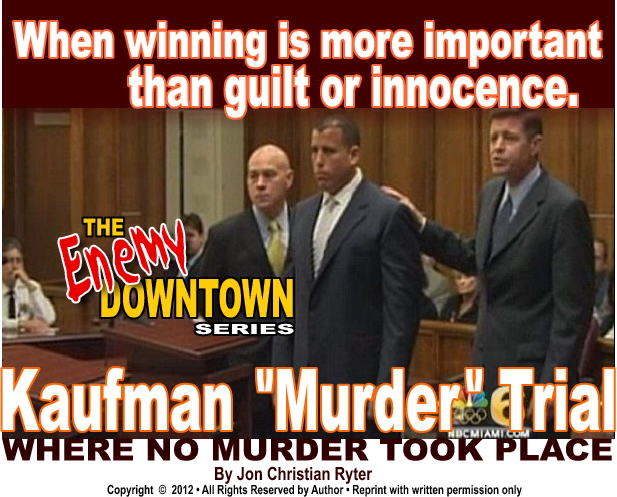
 hen
the Miami-Dade 11th Judicial Circuit Court jury foreman, Bernard Jennings,
in the matter of the State of Florida v Adam Kaufman, announced
the jury's verdict on Tuesday, June 5, 2012 that Kaufman was "Not
Guilty" of the murder of his wife, Eleonora "Lina"Kaufman,
the Miami-Dade Prosecutor Joe Mansfield, who sat drumming his fingertips
on the tabletop, was visibly upset. Although Mansfield had absolutely
no evidence that real estate developer Adam Kaufman had either
deliberately or accidentally killed his wife (and, in fact, knew that
Kaufman had submitted to a lie-detector test which, while not admissable
as evidence in a court-of-law, nevertheless affirmed he had not killed
his wife—either deliberately or accidentally),
hen
the Miami-Dade 11th Judicial Circuit Court jury foreman, Bernard Jennings,
in the matter of the State of Florida v Adam Kaufman, announced
the jury's verdict on Tuesday, June 5, 2012 that Kaufman was "Not
Guilty" of the murder of his wife, Eleonora "Lina"Kaufman,
the Miami-Dade Prosecutor Joe Mansfield, who sat drumming his fingertips
on the tabletop, was visibly upset. Although Mansfield had absolutely
no evidence that real estate developer Adam Kaufman had either
deliberately or accidentally killed his wife (and, in fact, knew that
Kaufman had submitted to a lie-detector test which, while not admissable
as evidence in a court-of-law, nevertheless affirmed he had not killed
his wife—either deliberately or accidentally), 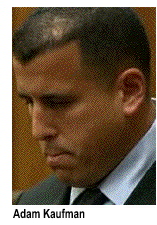 Mansfield
was convinced he could convict him. And, he tried. Hard.
Mansfield
was convinced he could convict him. And, he tried. Hard.
Joe
Mansfield
is not the first prosecutor that attempted to convict an innocent man
with "stretch-of-the-imagination" evidence, and he won't be
the last. The first one that comes to mind is the former prosecutor of
Durham, North Carolina Mike Nifong for prosecuting three white
Duke University students for a rape of a black prostitute—which
simply did not happen. Nifong knew that all of the physical evidence
said none of the Duke Lacrosse players had any sexual contact with
the victim, but he had a tough reelection campaign gong on, and in predominantly
black Durham, getting justice for a black hooker who claimed she was raped
by three white guys would guarantee his reelection. 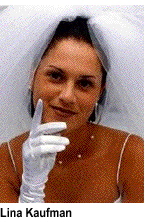 Crystal
Gail Mangum, who was intoxicated to the point of being "falling
down drunk" concocted the rape story to keep from being arrested
for public intoxication by Durham, North Carolina police.
Crystal
Gail Mangum, who was intoxicated to the point of being "falling
down drunk" concocted the rape story to keep from being arrested
for public intoxication by Durham, North Carolina police.
The DNA evidence revealed that Mangum had sexual relations with someone earlier that evening—but not anyone at the frat house, especially not the three accused Duke Lacrosse players who would be expelled from Duke University the moment the story, and their photos, hit the headlines. The fact that one of the three accused could prove he was not even at the off-campus frat house when the alleged rape purportedly occurred, and the fact that the DNA evidence clearing all of the accused, didn't stop Nifong from going ahead with the prosecution of the three—although at no time did he ever interview Mangum. On Dec. 22, 2006 Mangum confessed that she had not been raped by anyone. Nifong dropped the rape charge. It was then that the media learned he had concealed DNA evidence that established the innocence of the three Lacrosse players long before Mangum admitted she lied about being raped. The case was taken over by the North Carolina Attorney General. Nifong, who won reelection in November, 2006 voluntarily surrendered his law license in January, 2007 to avoid being disbarred. The State Bar Association disbarred him anyway. Nifong also lost his $5,000 per month government pension. Ultimately, he filed for bankruptcy.
Going back three decades to 1983. Do you remember the McMartin Daycare prosecutions in California that triggered a rash of prosecutions of daycare owners around the country for the alleged abuse of preschool toddlers? The McMartin investigation ran from 1984 to 1987. The trial ran from 1987 to 1990.
It began in 1983 when a Manhattan Beach, California mother, Judy Johnson, told police that her son had been sodomized by her estranged husband and a McMartin Day Care teacher, Ray Buckey, the son of daycare's administrator, Peggy McMartin Buckey. Peggy Buckey was the daughter of the school's founder, Virginia McMartin. Johnson—whose name was concealed by prosecutors—made accusations that the McMartin teachers had sex with animals, and that Ray reportedly flew around the room like a witch.
After a six year trial, no convictions were obtained, and all charges were dropped. Of course, the lives of six innocent people were ruined, as was a profitable daycare center. But the McMartin case was a career builder for prosecutors from 1983 to about 1995. Most notably was the career boost of the Florida Attorney General who used the daycare scare to score points with voters in 1984. To polish her "public service" star, she decided to investigate daycare centers in Dade County for sex abuse of toddlers allegations. She just wasn't about to sit around waiting for the allegations to come in. She was going to be proactive and find them.
She hired two self-styled "sex-abuse" experts, Joseph and Laura Braga to interview children (i.e., coerce "helped-along" confessions from preschoolers that they had been sexually molested). The Wall Street Journal began investigating the methods used by the Bragas in the mid-1990s when a young woman who had been wrongly convicted of sexually molesting preschoolers wrote to them and asked them to investigate her arrest and conviction. They did. The Journal learned that all of the "confessions" of the toddlers were well-scripted lines that had been fed to the children by the Bragas and rehearsed until the children themselves believed what they were saying had actually happened to them. All of the convictions were thrown out by a federal appellate court. Those who were finally exonerated still lost upwards of 9 years of their lives because they were framed by the State of Florida. Nothing happened to the Florida Attorney General who, by that time, had gained national prominence as President Bill Clifton's US Attorney General. Her name was Janet Reno.
It was much worse for Cameron
Todd Willingham who was accused of deliberately burning down his home
in Corsicana, Texas and killing his three daughters on Dec. 23, 1991.
National interest to determine if Willingham's home burning down
was really the result of arson, or if it was caused by accidental means
in 2008-09. But, by then, it was too late to help him. 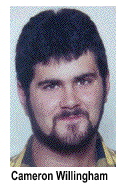 He
was executed by lethal injection for his "crime" on Feb. 17,
2004 at the Huntsville, Texas State Penitentiary.
He
was executed by lethal injection for his "crime" on Feb. 17,
2004 at the Huntsville, Texas State Penitentiary.
Dying in the fire on Dec. 23 was 2-year old Amber Louise Willingham and 1-year old twins Karmon Diane and Kameron Marie Willingham. Willingham escaped the blaze with minor burns. His estranged wife, Stacy Willingham was not there when the flash fire quickly enveloped the house. She testified that Cameron never abused his daughters, adding that "...our kids were spoiled rotten." The State insisted he started the fire to conceal evidence of child abuse.
The State Fire Marshall testified that even though he did not find chemical evidence of what it was, he was convinced that some type of liquid accelerant was used because he found several "pool-shaped char patterns" which, he testified, were indicative of accelerants. During Willingham's trial, the prosecution brought as a witness, Johnny Webb, a cellmate of Willingham's who testified that Cameron told him that he burned down his house and killed his daughters. Willingham denied that any such conversation ever took place. (Detectives commonly offer incarcerated people "deals" to testify to fabricated evidence when the police are convinced they have the guilty person in jail, but just don't have enough physical evidence to convict them. Perjured testimony sealed Willingham's fate. Shortly after Willingham's conviction, Webb received an early release from prison.)
Asked if he had anything to say before the State of Texas administered the lethal cocktail that ended his life, Willingham said: "The only statement I want to make is that I am an innocent man, convicted of a crime I did not commit. I have been persecuted for 12 years for something I did not do. From God's dust I came, and to dust I will return, so the Earth shall become my throne..." He was 36 years old.
Before Willingham's execution, Dr. Gerald Hurst, an Austin scientist reviewed the case file and concluded there was absolutely no evidence of arson—the same conclusion reached by several other arson investigators. Hurst knew the State was about to execute an innocent man. He sent his report to Gov. Rick Perry as well as to the Texas Board of Pardons & Paroles, with an appeal for clemency. In his report, Hurst said, "There was no item of evidence that indicated arson...The whole case was based on the purest form of junk science." Perry reportedly did not even look at the report, telling an aide that Willingham was "...a wife beater." Willingham was dead but Hurst was nevertheless determined to prove his innocence. Shortly after Willingham's execution, Hurst examined data from an experimental house fire (set without the use of any accelerants) that was used to train fire fighters and fire investigators.
Photos from an experimentally torched house showed the same type of "pool-shaped" char patterns that the Texas Forensic Science Lab said could be caused only by the use of an accelerant. In addition, the Crime Lab cited splintered glass in the windows as evidence of extreme heat caused, once again, by an accelerant. The same type of splintered glass pattern existed in the experimental house—caused by cold fire hose water splashing on the windows as the flames devoured the interior of the home. According to Hurst, when any fire reaches a flashover threshold, it is impossible to identify accelerant patterns. Hurst added that fire always heads for any point of ventilation. The one thing Hurst knew for certain was that the Texas Forensic Lab was wrong about two things. First, no accelerant was used and second, the fire was not arson. It likely started in the attic, not on the first floor. A fire scientist hired by the Innocent Project, John Lentini (who has conducted over 2,000 fire scene investigations), reviewed all of the evidence which led to Willingham's conviction. In his report, Lentini said: "...each and every one of the indicators [the fire marshall's investigators] relied on have since been scientifically proven to be invalid." In layman's language: there simply was no arson. The fire had an accidental origin. No crime had been committed by anyone—except the crime of executing an innocent man.
Several reporters and fire scientists who followed the Corsicana, Texas case were convinced there was a rush to judgment. But when they raised questions with John Bradley, a friend of the governor who was appointed by Perry to head the Texas Forensic Science Commission in 2001. Bradley saw his job as protecting the status quo—or anything that might embarrass the governor. With scores of well-respected fire scientists questioning the conclusions of the State's fire scene investigators, Bradley blocked their access to the evidence in what appeared to be an attempt to tidy up embarrassing loose ends. Executing an innocent man for a crime that didn't happen would not look well on the resume of a governor who was planning a run for the White Houe, and who refused to even look at the evidence as he denied an innocent man a clemency hearing.
Because of New Yorker magazine writer, David Grann, who started asking tough questions of a governor who was planning to run for President of the United States, Gov. Perry needed to get rid of this black cloud over his head before he announced his candidacy. The State of Texas reopened its investigation of the Willingham case in June, 2009. In August, 2009, 5 years after Willingham's execution the Chicago Tribune noted that its investigation, and that of the Innocent Project, concluded that the original investigators relied on outdated theories and investigative methodology; and that an innocent man had been executed. Perry has insisted since 2004 when Hurst filed his first report with both him and the Pardons and Parole Board that it appeared to Hurst that Willingham was innocent that "...the supposed experts..." using "finger quotes" Perry said, "...were wrong, and [people] should not listen to anti-death penalty propaganda."
One of the prosecutors in Willingham's trial admitted that the the forensics were undeniably flawed—but other reasons established his "guilt." The other reason? The tainted testimony of Johnny Webb who traded a lie for his freedom. Convicting and executing a child killer is a career-builder. Keeping a lowlife in prison for another year or two is not.
That's the reality of the US judicial system. While it should be, it isn't about honestly determining the actual guilt or the presumed innocence of an accused. The American legal system has devolved into what has become a career-building battle of winning or losing for the combatants—the lawyers. The rule of law which benefits the accused does not benefit the lawyers who are prosecuting them.
When the State executes an innocent person because of overzealous prosecution, slipshod investigations by the medical examiners, or by police who, more often than you might think, fabricate evidence because they "know" they got the right person, but they just can't prove it. How do you "fix it"? When they State wrongly takes a life, it's not enough to issue a piece of paper signed by the governor exonerating that individual, or paying the family money to compensate them for their loss. How do you restore that life? In the case of Cameron Todd Willingham, Gov. Rick Perry had the chance to correct the mistakes covered-up by John Bradley who stonewalled every effort by the Innocent Project and others to get at the truth. Had Perry taken a half hour to look at the reports sent to him by Hurst and Lentini, Willingham would likely still be alive—and a free man. Clearly, that never happened.
The
Kaufman Case
Today in our justice system, the lawyer who wins a high profile murder
case (if the winner is the prosecutor, that is) benefits like the man
who wins the lottery. That prosecutor is now one election away from
becoming that State's Attorney General or even its next US Congressman
or Senator. That's why winning is more important than establishing
the actual guilt or innocence of the accused.
And, that's why, when Adam Kaufman passed the lie detector test given to him by the Aventura police, they continued trying to build a case against him. There wasn't anyone else. He did it or, God forbid, he was telling the truth. Since Miami-Dade Chief Medical Examiner Dr. Bruce Hyma, who never performed the autopsy or even saw the body, decided it was a deliberate murder (through mechanical asphyxiation) by Kaufman squeezing the life out of his wife, Eleonora "Lina" Kaufman, causing the bruising to her neck and the blood vessels in her eyes to burst. The State had to find—or create—the evidence needed to support their conclusions in order to convince a jury that real estate developer Adam Kaufman was a bad man with a secret girl friend (the hypothetical motive for the crime) although the prosecution repeated over and over again as their witnesses testified, that the State does not need to provide a motive. The other evidence, they insisted repeatedly, would be compelling enough. Including, once again, a "jail-house confession" from a cellmate who was willing to trade his testimony for early release from prison. Once again, we have police and prosecutors working in tandem to create their own compelling evidence—another jailhouse confession. This time, however, the jury wasn't buying.
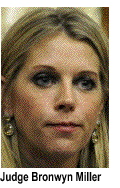 Making
the trial tough on the defense team of Bill Matthewson and Al
Milian was a judge of the 11th Circuit Court, Bronwyn Miller (a
pro-prosecution jurist appointed to fill an unexpired term in the far
left 11th Circuit (Miami-Dade) by then Gov. Charlie Crist, who
had already lost the primary to lawyer and hospital administration Rick
Scott, now the governor of the State of Florida. Crist, like
a pendulum swinging left, had already become a left-leaning rogue independent
who felt he owed no allegiance to his former conservative base.
Making
the trial tough on the defense team of Bill Matthewson and Al
Milian was a judge of the 11th Circuit Court, Bronwyn Miller (a
pro-prosecution jurist appointed to fill an unexpired term in the far
left 11th Circuit (Miami-Dade) by then Gov. Charlie Crist, who
had already lost the primary to lawyer and hospital administration Rick
Scott, now the governor of the State of Florida. Crist, like
a pendulum swinging left, had already become a left-leaning rogue independent
who felt he owed no allegiance to his former conservative base. 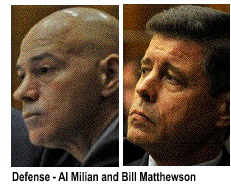 It
may be that appointing a far left prosecutor to the 11th Circuit was his
"get even" parting shot at the Republican Party.
It
may be that appointing a far left prosecutor to the 11th Circuit was his
"get even" parting shot at the Republican Party.
Like most far left anti-white guy-defendant judges, Miller spent the entire trial sustaining every objection made by the prosecution and overruling every objection made by the defense (at least in those portions of the trial I watched on TV or on tape). The times she sustained an objection by Milian or Matthewson I could count on on hand. When prosecutor Matthew Baldwin slipped Dr. Hyma a note to warn him that defense attorney Milian was about to nail him for making a statement that was untrue, and to correct what he said before that happened, Milian objected to the note-passing to a witness sitting on the stand. Miller overruled his objection and then took the time to advise the jury that it's perfectly acceptable for the prosecution to pass notes to their witnesses when they are in the middle of being cross-examined.
All I can say, I would hate to be accused of a crime in Miami-Dade. The chances of getting a fair trial there if you are a middle class conservative white male are somewhere between 40% and zero. The rule of law does not work in the "social justice" Miami-Dade court system.
Because of the slipshod investigative
work by 11 officers from the Aventura Police Department, 10 members of
the Miami-Dade Fire Rescue Squad and, most of all, the extremely inept
and, in my view, not too honest and much too political medical examiner,
Dr. Hyma. 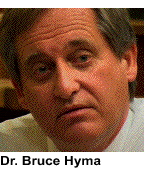 Defense
attorney Alberto Milian actually accused Hyma, as he was
cross examining him, of "...fabricating evidence as you go along."
Defense
attorney Alberto Milian actually accused Hyma, as he was
cross examining him, of "...fabricating evidence as you go along."
It should be dawning on you by now that the accused in any trial is a pawn in a chess game. The pawns always lose since pawns are always sacrificed. It's the knights, bishops and rooks that are the power pieces on the chessboard—the princes of industry and the barons or banking and business—who make the rules the common man follows but the elite ignore. The pawns (the common working class man), struggle against virtually unbeatable odds in a lifegame where the rules are unfairly written to benefit the princes, lords and barons and, of course, the human capital they favor. The outcomes are pretty much predetermined by judges who, more often that not, are former prosecutions and thus, are those who predominantly favor the prosecution.
What was it, again, that Kaufman prosecutors Joe Mansfield and Matthew Baldwin said as their shoddy evidence crumbled under the cross examinations of Dr. Hyma, the Aventura police CSIs and the EMTs by defense lawyers Alberto Milian and Bill Matthewson? Remember this: in the final analysis one thing and one thing only convicted Cameron Todd Willingham—Johnny Webb's testimony that Willingham admitted killing his daughters a few months before he received his "Get Out of Jail Free" card from the State of Texas.
In the Kaufman case,
everytime Milian tore the prosecution's arguments apart and showed
the flaws in their logic, Mansfield and Baldwin assured
the jury that, by itself, those shreds of evidence might be weak, but
combined with the rest of the evidence they had amassed, they would conclusively
prove that Adam Kaufman killed his wife so he could openly engage
in a romance with a woman he was going to bed with a couple months after
the death of his wife (which actually turned out to be more like seven
months). 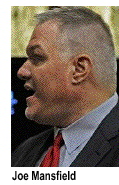 The
motive for the deliberate murder—another woman. The damning testimony?
Another jailhouse confession.
The
motive for the deliberate murder—another woman. The damning testimony?
Another jailhouse confession.
As Al Milian destroyed one prosecution witness after another, Mansfield waited until the defense rested to play his trump card—Adam Kaufman's "mistress" as a rebuttal witness. Rebutting what? The defense's assertion that Adam Kaufman and his wife had a loving, faithful relationship. What Mansfield thought he could prove—or at least, negatively color the views of the jury—was that Kaufman had a mistress he was hiding and wanted to openly pursue. Something he could not do as long as his wife was alive. That would establish the motive for the "crime" that two defense witnesses, former Palm Beach Medical Examiner John Marraccini and former New York City Medical Examiner Dr. Michael Baden, a super star witness who was appointed by Congress to reinvestigate the assassinations of both President John F. Kennedy and Martin Luther King, both told the jury that Linda Kaufman's death was caused by heart disease, it was not a homicide. It was the final image Al Milian wanted to leave with the jurors.
Mansfield saved his
star witness' testimony for the very end of the trial—after both
the State and the Defense had rested. He wanted to send the jury into
the juryroom with the image of a philandering husband on their minds.
It didn't happen. Too bad the prosecution—which was every bit as
inept as Dr. Hyma and the crime scene forensics people—didn't
depose Fara Corenblum before calling her to the witness stand.
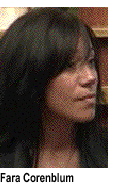 As
the prosecution called Corenblum, they reiterated again that their
witness would show that the Kaufmans did not have the storybook
marriage the defense alleged, and Corenblum was evidence of that
fact.
As
the prosecution called Corenblum, they reiterated again that their
witness would show that the Kaufmans did not have the storybook
marriage the defense alleged, and Corenblum was evidence of that
fact.
But, once Mansfield got her on the stand, he wished she was somewhere else. She didn't help his case—she helped Matthewson's case. Her testimony supported the view of the storybook marriage. And instead of confirming that Kaufman was the uncaring philanderer alleged by Mansfield, Corenblum admitted that she was the one who attempted to initiate something, but Kaufman simply wasn't there because, she said, "...he was emotionally unavailable. His wife had just passed, and he told me he could not fully commit to a relationship. He still wore his wedding ring and often told me he still loved Lina." Her testimony backfired on Mansfield. Not only did he not convince the jury that Kaufman was a philanderer, he convinced them that not only was Kaufman not running around, he was deeply in love with a departed wife and was still grieving deeply—5 years later. It took the Kaufman jury 8 hours to sift through the evidence and agree that Adam Kaufman did not kill his wife—accidentally or deliberately. It took me three to four times that long to research and write this piece. In about 45 minutes I could have simply put up a video about the Kaufman acquittal. But, the piece I wanted you to see was not just the question of the guilt or innocence of the man because after watching about five minutes of Milian's cross examination of Dr. Hyma, I knew without a doubt that Kaufman, who spent 33 months of his life in prison awaiting trial, was innocent.
This piece is intended to be an indictment of the criminal justice system of the United States. The State of Florida and the Miami-Dade justice system owes Adam Kaufman for the time he was forced to sit behind bars. They owe him for trying their best to frame him for murder. They owe him for the police's swapping the promise of an early release from prison to a con for a phony statement that Kaufman confessed that he killed his wife. And, Miami-Dade County owes its citizens an honest medical examiner. Dr. Bruce Hyma, an administrative bureaucrat who earns a quarter of a million dollars per year as the Chief Medical Examiner for Miami-Dade County needs to be fired for his vindictive attempt to frame an innocent man—and for his kowtowing to the Miami-Dade prosecutors who used him to make their case appear like...well, an honest prosecution. He's actually more frightening than Joe Mansfield. If you live in Dade County, Florida you need to be afraid of that man. Because you don't have to be guilty to find yourself in his crosshairs. You just need to be closely related to, or dating, someone who dies of strange circumstances in his county where you have the misfortune of being the pawn who is with them when they died.
More important, whatever police officer or prosecutor promised the con who said Kaufman confessed an early release for his fabricated testimony needs to [a] be fired and [b] be charged with soliciting perjury. (And, the con who was released from prison for that testimony needs to be rearrested, sent back to prison to complete his sentence—and he also needs to face felony perjury charges. Remember: Cameron Todd Willingham was executed for a crime that did not happen because of perjured testimony.) If the person soliciting the confession was a lawyer, he or she needs to have his or her law license permanently suspended because not only was Adam Kaufman put at risk of being convicted by false testimony, if you live in Miami-Dade County, you are now at risk. I know, you're thinking, "...as long as I don't do anything that will cause my arrest, I don't have anything to worry about."
I imagine, on November 6, 2007 (the day before Eleonora Kaufman's tragic death), Adam Kaufman felt the same way. In fact, in his post-trial interview with In-Session, Kaufman made a statement to that effect to Mike Brooks of In-Session, adding that, in the end, justice prevailed. Yes, it did. No thanks to the State of Florida.
And no thanks to the Florida judicial system with its lopsided favoritism to the State's prosecutors. I know one thing—and not just in Florida. In every State of the Union the accused is now deemed by the State (and the media) to be guilty until the accused proves he or she is innocent. Increasingly, men and women are being convicted in courts not because of overwhelming evidence of their guilt, but because of the instructions given to the jury by judges who ask the jury to make their decision based on a preponderance of the evidence, although they tell them that it is incumbent on the prosecution to prove, beyond a reasonable doubt, that the defendant—and only the defendant—is guilty of the crime for which he or she was charged.
At what point does "...a preponderance of the evidence" (a term used in civil law, not criminal law) morph beyond civil law into criminal law, and tip the scales of justice enough to impact, in criminal cases, precisely who has to prove the guilt (or innocence) of an accused? The State? Or the accused? In more and more cases it appears that juries expect the Defense to put on an aggressive case, and not just refute the claims of the prosecution. They expect the defense to actually prove the defendant did not do what the prosecution alleges—and, if they can't, far too many juries won't hesitate for a moment to convict them. They ignore the fact that, in the United States of America, the State must prove—beyond a reasonable doubt—that the defendant is guilty. If they can't, they are obligated to acquit. But, that was the good old days.
Under those rules, too many defendant were getting off. The public assumes the State will not arrest and place on trial anyone for whom they did not have sufficient evidence to establish their guilt. So, when a jury acquits, they believe it was either a stupid jury or a stupid prosecutor. The media, instead of lauding the fact that the justice system works, criticizes the State for wasting taxpayer dollars on amateurish prosecutions that let the bad guy escape, and deprived the grieving family of justice.
As a result of that type of pressure on the State judicial systems, the courts have felt obligated to change how juries deliberate; and how they are required to weigh certain pieces of evidence presented during the trial. In too many cases, juries are being coerced by the judge's instructions to mitigate the "weight" of specific items of evidence—or the lack of it, or specific testimony or reactions to specific testimony. Included is the right of the State to "challenge" the statements the Defense while they are making in their closing argument, allowing the State to bring in rebuttal witnesses to impeach the Defense closing arguments. The purpose? To give the State the chance to make a post-game "Hail Mary" pass when their legal argument disintegrates moments before the case goes to the jury..
In the Kaufman trial, as prosecutor Baldwin was making his closing argument, he dismissed the testimony of Adam Kaufman's mother-in-law, Frida Aizman, who defended her son-in-law. Baldwin said the only reason she agreed to testify for her son-in-law was because if she didn't, she would no longer see her two grandchildren. Baldwin attempted to convince the jury that she lied on the stand to keep her grandchildren, by saying to the jury: "Do you think for a second she would be seeing her grandchildren with her husband in Italy and her son in Denmark? She's alone here. They are the joy of her life. Do you think she's going against him?" Overwhelmed and tearing up in anger, Aizman's emotions boiled over as she challenged Baldwin: "Are you accusing me of lies?" The outburst caused her ejection from the courtroom by Judge Miller.
In the end, according to jury foreman Bernard Jennings (a court-certified mediator) said there was too much evidence that Eleonora Kaufman had very serious albeit undefined medical problems. Jennings said that listening to the testimony, he became convinced the defense theory was right—33-year old Lina collapsed of an undiagnosed heart ailment and fell on the magazine rack. "That was her stroke of luck from nature," he said, referring to a rare inflammation of the heart that was described, in meticulous detail by both Dr. Marraccini and world renown medical examiner Michael Baden—whom the jury found far more credible than Dr. Hyma, the Miami-Dade Chief Medical Examiner. The acquittal was a stinging denunciation of Dr. Hyma whose mechanical asphyxia diagnosis (which took 18 months to form) formed the flimsy foundation for the charges against Kaufman, and was the foundation upon which the prosecution build their "house of cards." But had Kaufman's family not had the resources to get him the best legal help they could muster, and had Alberto Milian and Bill Matthewson not been his lawyers, the odds are better than 50-50 that the "jury of his peers" would have convicted Adam Kaufman of the murder of his wife when absolutely no crime had been committed—except the prosecution's attempt to make it appear that one had been committed.
Instead, after the verdict was read, Matthewson was able to tell the media: "It's a wonderful day for the American justice system." It would have been a better day if Matthewson and Milian filed a judicial complaint seeking disciplinary action against Judge Bronwyn Miller for improper behavior/demeanor (acting unfairly or with bias for or against one side). She is running for reelection (she was originally appointed, so she is actually seeking election for the first time even though she is running as an incumbent)—with no opposition. It would be nice to have the Florida's Judiciary Conduct Commission let their judges know they are accountable for their actions and for their overly biased decisions. It does not serve the public interest, nor does it serve the rule of law.

Copyright © 2009 Jon Christian Ryter.
All rights reserved.


